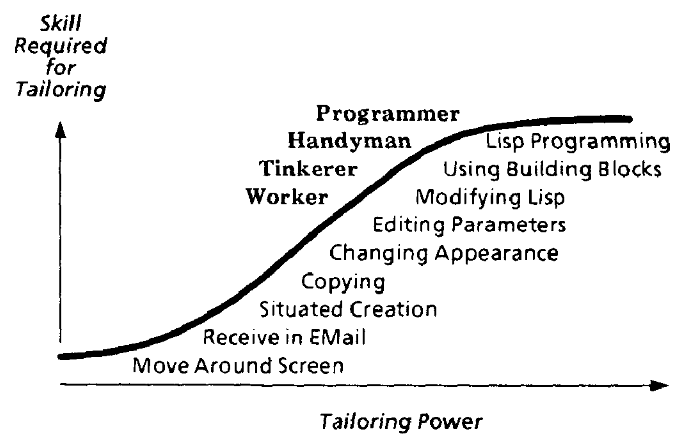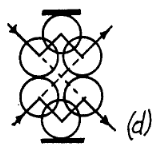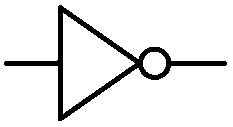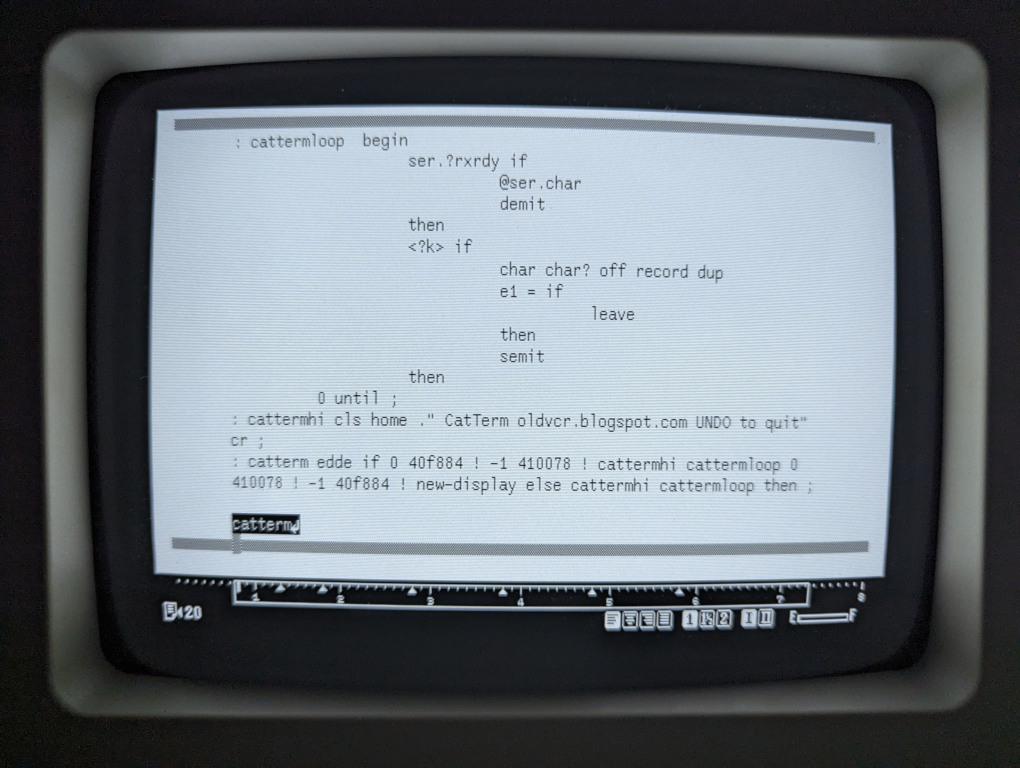The Canon Cat is written in Forth, a concatenative programming environment available to the operator as a subsystem scripting language.
Open computation that goes beyond open source, made from parts designed to be recombined.
Every layer of a malleable computing system is designed to support arbitrary recombination, reused across environments and freely sharable with others. Modifying such a system happens in the context of use, rather than through some separate tool and skill set.
In contrast with monolithic applications, these amorphous computers are finely tuned and thoughtfully crafted by their operator over the course of a practice.

At its core, a malleable system is made of heterogeneous parts capable of assemblage. Within the context of computation, it is an attribute shared by different interoperable systems, not unlike programs that communicate via unix pipes, file browsers and some flow-based programming environments.

A malleable part is a transformer in a chain of transformers, and is itself also made of equally interconnected links, nodes or agents. The more malleable a system, the blurrier the distinction in the granularity of these parts.
| Malleability | |||
|---|---|---|---|
| Silo | A system in which nodes will forcefully captures the message is a silo. | ||
| Shallow | Messages can enter and leave a system that is not malleable itself, this is malleability of a superficial kind. | ||
| Average | Messages can flow freely between internal nodes of a malleable system, but capabilities are restricted by domain, interface, or operator competency. | ||
| Deep | Messages can be passed seamlessly across every level of the system, the division into layers has entirely vanished. | ||
A potential advantage to this granularity is the distribution of complexity so that an operator can more gently transition toward a deeper understanding of the finer parts that makes up the solution to a problem.


Designing for reversibility is to make a system approachable to a wide range of competency, lower the cost of errors, and limit the blame put upon its operator, by favoring transformations that can be undone.
Some automata conserve enough state through their transformation that computation can happen backward, without cluttering large amount of memory with screenshots.

Familiar examples of reversible computation are the multiplication of a number by a fraction and using the reciprocal to recover that number, or the stack machine operation rot. The bitwise operator not or the stack machine swap are involutive, which means that same operator can applied once again to recover the earlier state.

- Inverse Operators, Vine Language
- Thermodynamics of Garbage Collection, Henry G. Baker
- Undoing Register Machines, Fractran
Designing for concatenation is using a point-free message passing paradigm that does not identify the arguments on which it operates. It is mentioned here as it might prove valuable in a Deeply Malleable system as a way to combined both inspectability down to its the mechanical transformation, and reasonable evaluation performance.
: SQUARED ( n -- n^2 ) DUP * ; : CUBED ( n -- n^3 ) DUP SQUARED * ;
In such a system, nodes merely compose other nodes, among which are combinators that manipulate the arguments, regardless of context. This is a fancy way of saying that a concatenative sub-expression can be replaced with a name that represents that same sub-expression.
: POPCNT ( n -- bits ) 0 swap BEGIN dup WHILE tuck 1 AND + swap 1 rshift REPEAT DROP ;
A maximally accessible system such that the finer details in movement of bits are observable but that does not run on generic hardware would be paradoxical by virtue of its inaccessibility. For that reason, depending on the host computer, a function definition like the one above(which might exist as a single opcode), should probably still be part of the observable system definitions even if it is not evaluated.

Designing for differences is to consider the compatibility between wildly different interfaces and notations to support networks of people collaborating, across many levels of competency, to make software work for themselves and their communities.
The rewriting language Maude, uses a mixfix notation, making the system
neither prefix, infix, or postfix, but adaptable to the user's needs and
background. To demonstrate something akin to the mixfix notation and give a
taste of rewriting, consider a system made of rules where a given left-hand
side is replaced by its corresponding right-hand side, and where
?words will match anything.
(add ?x ?y) -> (?x + ?y) (?x ?y add) -> (?x + ?y) ((?a) + ?b) -> (?a + (?b)) (0 + ?b) -> (sum ?b)
(add 1 2)

The first two rules of the program above both enable the translation between
prefix & postfix, to the infix notation, as well as transcribing the english
symbol add that could otherwise be localized. This is to demonstrate that inter op between
vastly different systems is possible.
- Hedy, multi-lingual PL.
- No Stinking Loops, array notation.

Designing for bootstrapping is to make a system which does not depend on a binary seed that cannot be built from source. The goal is to start from a minimal, easily inspectable binary which should be readable as source and bootstrap into a practical and reproducible user interface. A build is reproducible if given the same source code, build environment and build instructions, any party can recreate bit-by-bit identical copies of all specified artifacts. To accomplish this:
- The build system needs to be made entirely deterministic. Transforming a given source must always create the same result. For example, the current date and time must not be recorded and output always has to be written in the same order.
- The set of tools used to perform the build and more generally the build environment should either be recorded or pre-defined.
- Users should be given a way to recreate a close enough build environment, perform the build process, and validate that the output matches the original build.
Deployment (n.): getting computer programs from one machine to another and having them still work when they get there.

- Malleable Essay, Ink & Switch
- Malleable Systems, forum
incoming: 2025